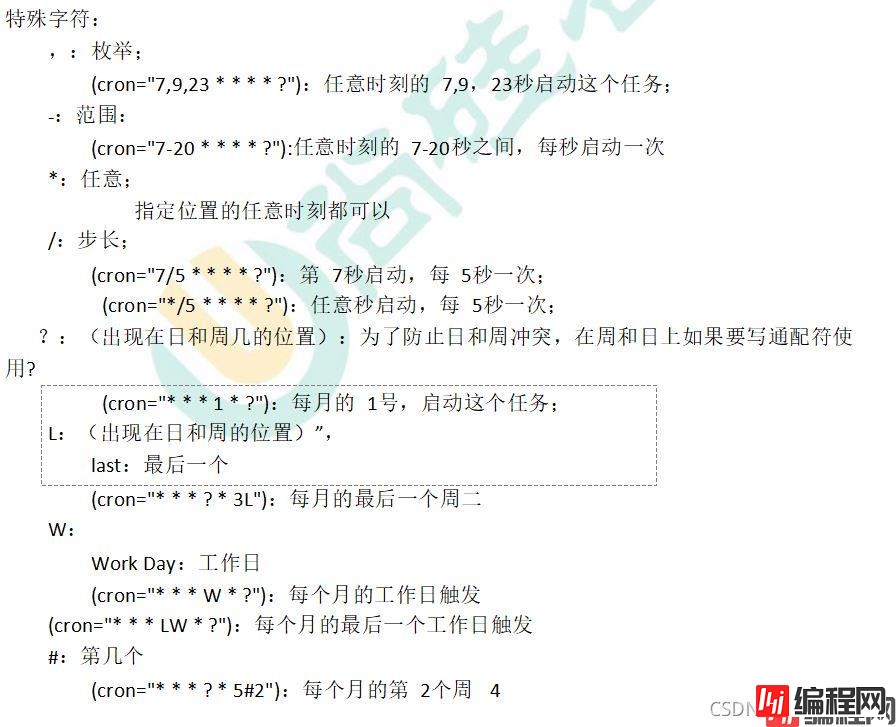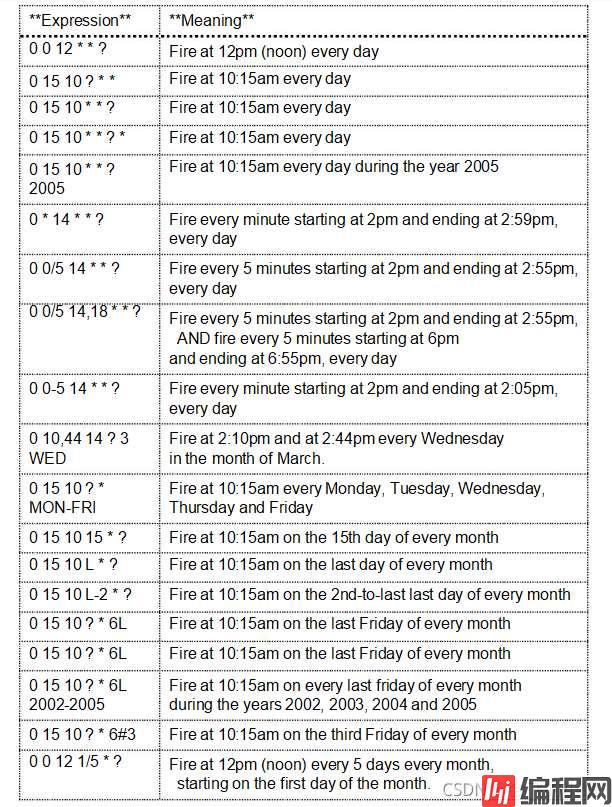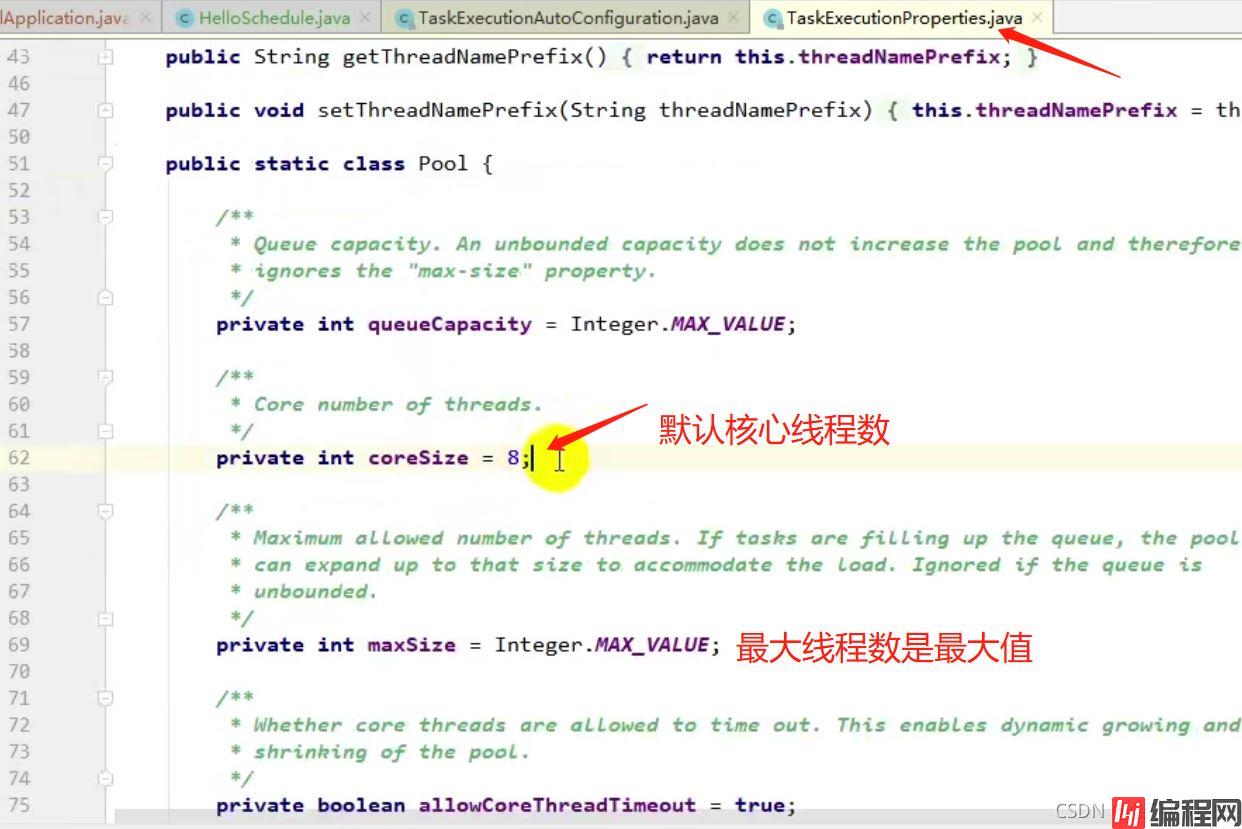Python 官方文档:入门教程 => 点击学习
目录一、定时任务1、cron表达式2、cron示例3、SpringBoot整合总结一、定时任务 1、cron表达式 语法:秒 分 时 日 月 周 年 (其中“年”spring不支持
语法:秒 分 时 日 月 周 年
(其中“年”spring不支持,也就是说在spring定时任务中只能设置:秒 分 时 日 月 周)




@EnableScheduling
@Scheduled
实例:
package com.xunqi.gulimall.seckill.scheduled;
import lombok.extern.slf4j.Slf4j;
import org.springframework.scheduling.annotation.Async;
import org.springframework.scheduling.annotation.Scheduled;
import org.springframework.stereotype.Component;
import java.util.concurrent.TimeUnit;
@Slf4j
@Component
@EnableScheduling
public class HelloScheduled {
@Scheduled(cron = "*/1 * * * * ?")
public void hello() {
log.info("hello...");
try { TimeUnit.SECONDS.sleep(3); } catch (InterruptedException e) { e.printStackTrace(); }
}
}
定时任务默认是阻塞的线程,也就是说即使你设置成每一秒执行一次,但是方法内部的业务时间需要5秒才能执行完,也会造成定时任务每6秒才能执行一次。
当然我们可以开启异步线程:
@EnableAsync
@Async
实例:
package com.xunqi.gulimall.seckill.scheduled;
import lombok.extern.slf4j.Slf4j;
import org.springframework.scheduling.annotation.Async;
import org.springframework.scheduling.annotation.Scheduled;
import org.springframework.stereotype.Component;
import java.util.concurrent.TimeUnit;
@Slf4j
@Component
@EnableAsync
@EnableScheduling
public class HelloScheduled {
@Async
@Scheduled(cron = "*/1 * * * * ?")
public void hello() {
log.info("hello...");
try { TimeUnit.SECONDS.sleep(3); } catch (InterruptedException e) { e.printStackTrace(); }
}
}
这样就会开启异步线程,并且是非阻塞线程,因为每次都会开启一个线程来执行,我们可以看一下源码配置的截图,这个就是异步执行的默认配置,核心线程数是8,最大线程数是无限大,这时如果一直每秒执行一次,则会造成服务器资源耗尽。

当然,我们可以在配置文件中进行定时任务线程池的设定:
#核心线程数
spring.task.execution.pool.core-size=20
#最大线程数
spring.task.execution.pool.max-size=50
#队列大小
spring.task.execution.pool.queue-capacity=10000
本篇文章就到这里了,希望能够给你带来帮助,也希望您能够多多关注编程网的更多内容!
--结束END--
本文标题: Java spring定时任务详解
本文链接: https://lsjlt.com/news/137376.html(转载时请注明来源链接)
有问题或投稿请发送至: 邮箱/279061341@qq.com QQ/279061341
2024-03-01
2024-03-01
2024-03-01
2024-02-29
2024-02-29
2024-02-29
2024-02-29
2024-02-29
2024-02-29
2024-02-29
回答
回答
回答
回答
回答
回答
回答
回答
回答
回答
0